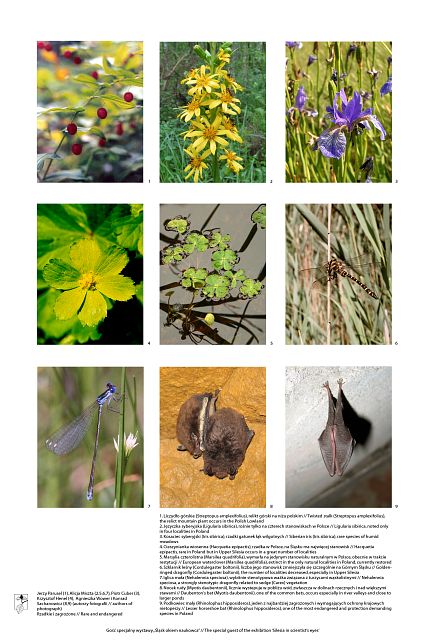
Description popularizing the research project
"Death Triangle" it is the title of a documentary made by Jerzy Śladkowski in the 90"s. the film was produced in Sweden but the triangle is Silesia, actually its environmental and social disaster. The main theme of the film are blackness and death resulting from uncompromising wasteful exploitation of resources as the overriding aim was more trains with coal, more pig iron and anthracite.
With the political changes the invisible hand of market economy stopped the exploitation of Silesia. Then came a question "What about the environment?". That is when the Centre was set up. Its main aim was investigating if there was any environmental heritage left in Silesia what then seemed to be a joke of the new government.
Looking back from the 15-year perspective we can say that the Nature deals better with our mindless industrial actions than we do with the free market reality. The watchful eyes of researchers let us discover the species which once called Silesia their home and, if given a chance would come back here again. Among them there is twisted stalk (Streptopus amplexifolius) for which Silesia is a second home as it is a permanent resident of mountain regions. What made siberian ligularia (Ligularia sibirica) to settle down in Silesia if it has already had 4 other localities in Poland? Unfortunately water pollution turned out to be so high that the only Polish water fern European waterclover (Marsilea quadrifolia) has disappeared in Silesia completely. But as quadrifolia means four-leaf and a four-leaf clover brings luck its restitution has a great chance of success.
Today looking at Silesia from a bird"s-eye view everybody admits that it is greener than other regions of Poland. Moreover some people claim that it turns into a new lake district. Researches on dragonflies, which require quite clean water show that the number of their species is equal to the one in Mazury Lake District. It is a rather unexpected gift resulting from wasteful exploitation of coal. Other remnants of mining activities like shafts and galleries turned out to be perfect accommodation for numerous flying nocturnal predators.
To find, describe and inventory - these are the aims of the Centre. It is good that the list of species living in our neighborhood is longer and longer.
We wish the Centre that they had only one problem where to find funds to buy new hard disks as the old ones have been already filled with bits of information on undervalued treasures of Silesia - its wild fauna and flora and their environment.
Abstract
One of the main aims of Upper Silesian Nature Heritage Centre is recognizing, analyzing and predicting condition of natural environment. To achieve these aims projects of monitoring rare and endangered plants, animals and biotopes are run. Since the beginning of the Centre 15 years ago, 33 different projects have been realized. Some of them after analyses and inclusion in the data base were temporarily suspended. At the moment 12 projects are started or being continued.
So far the size of population of siberian iris Iris sibirica and Hacquetia epipactis, distribution and the size of population of a wasp spider (Argiope bruennichi) as well as species composition of dragonflies in water-peat reserves have been analyzed in the whole Silesian Voivodship. In given areas species composition of bats has been analyzed and geobotanical inventory of humid meadows has been performed. Monitoring of such bird species as a white stork (Ciconia ciconia), a corncrake (Crex crex), a magpie (Pica pica), a dipper (Cinclus cinclus) and migratory goose Anser sp have been performed. Such plant species as twisted stalk (Streptopus amplexifolius), siberian ligularia (Ligularia sibirica) and pasqueflower (Pulsatilla patens) and animal species as a bumble bee Bombus sp., ants Formicidae, bees, wasps not living in hives and a brown bear (Ursus arctos) are still being monitored.
Recently researches aimed at assessing size of population of a black-bellied hamster (Cricetus cricetus) and comparing odonatofauna of peat grounds and renaturalized water bodies of antro-pogenic origin have been started.
For the first time in history of the Centre measures have been taken to restitute European water-clover (Marsilea quadrifolia) in its only locality in Poland which is situated in Silesian Voivodship.
The monitored species often have significant environmental value not only for the region of Upper Silesia but for Poland and Europe as well. Information concerning their distribution and population helps to assess how endangered they really

